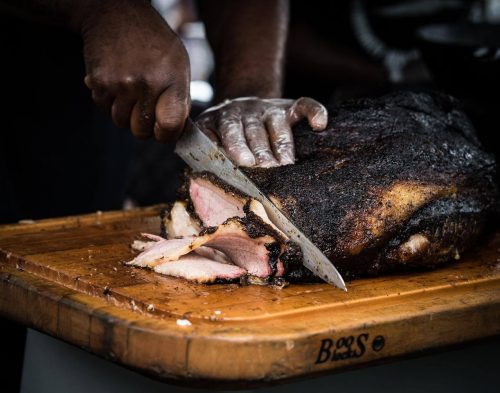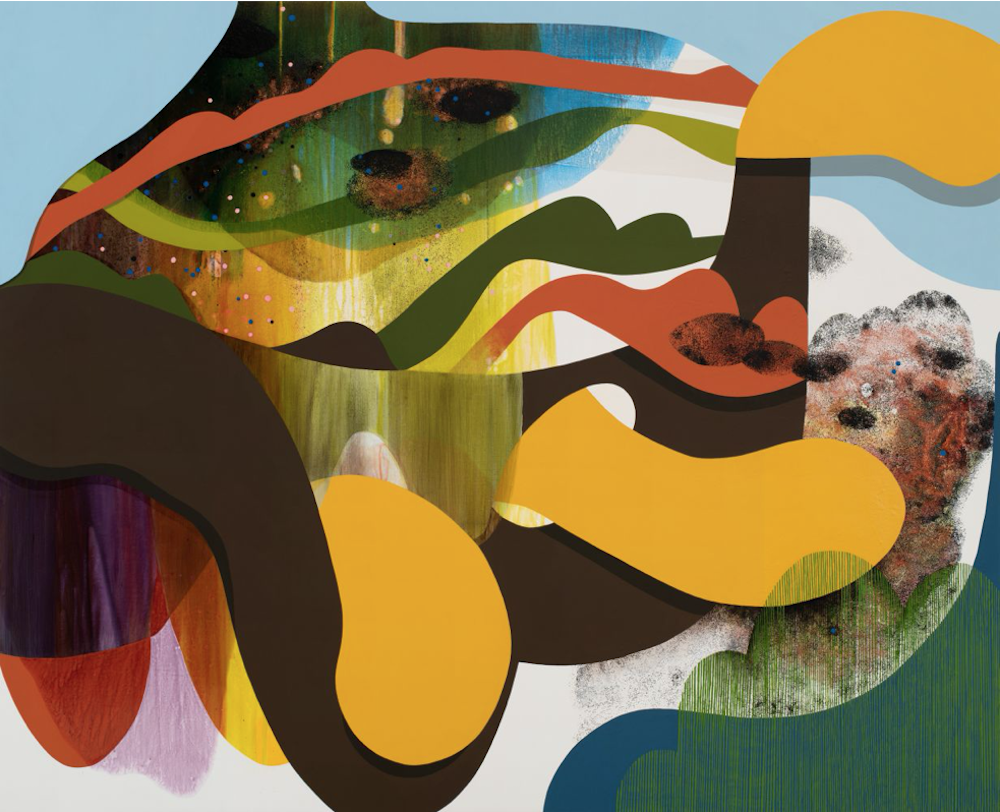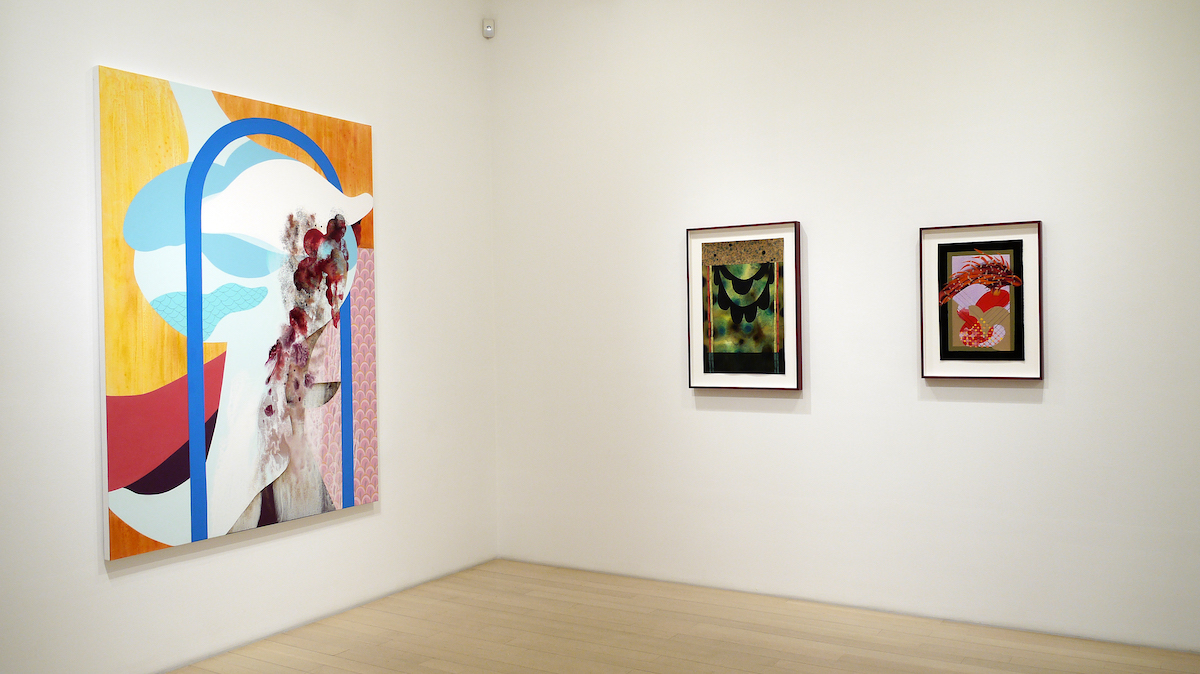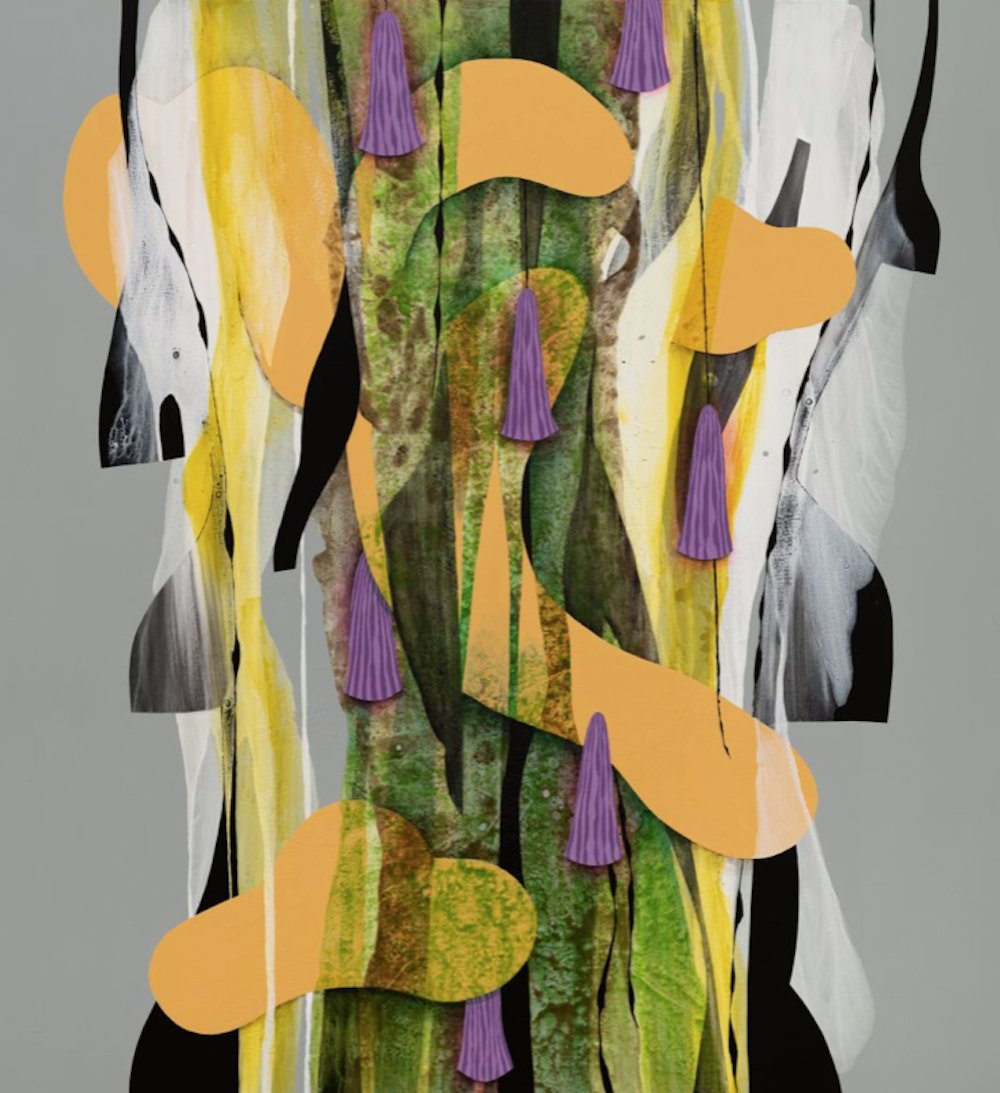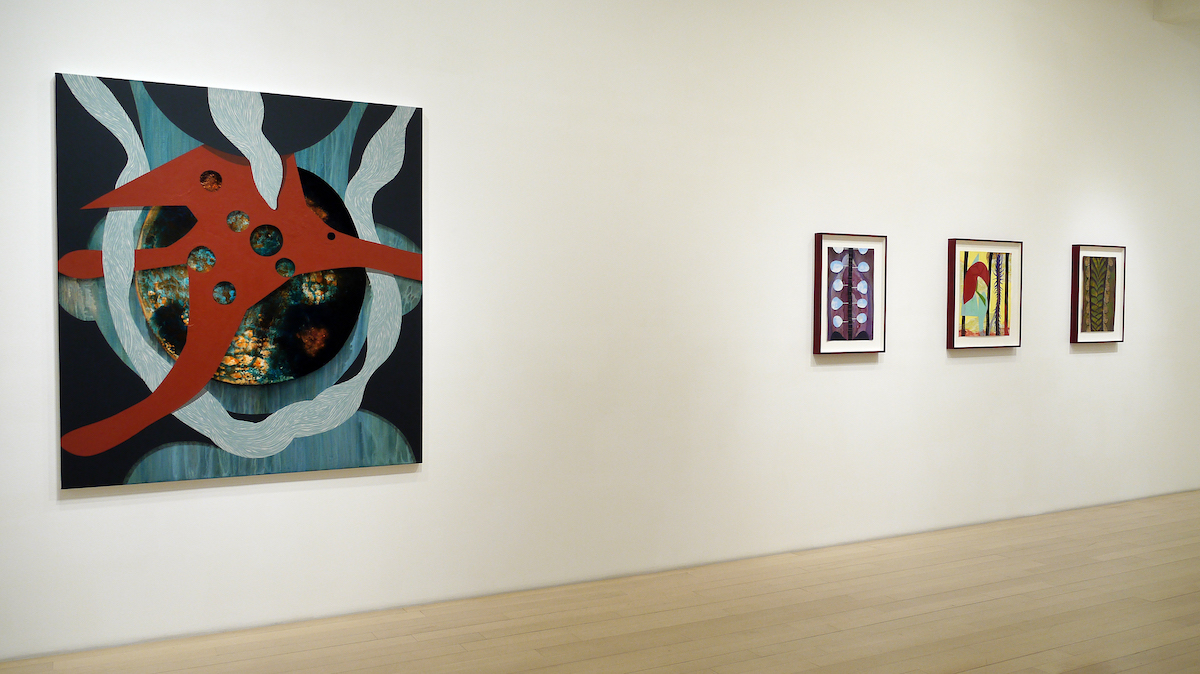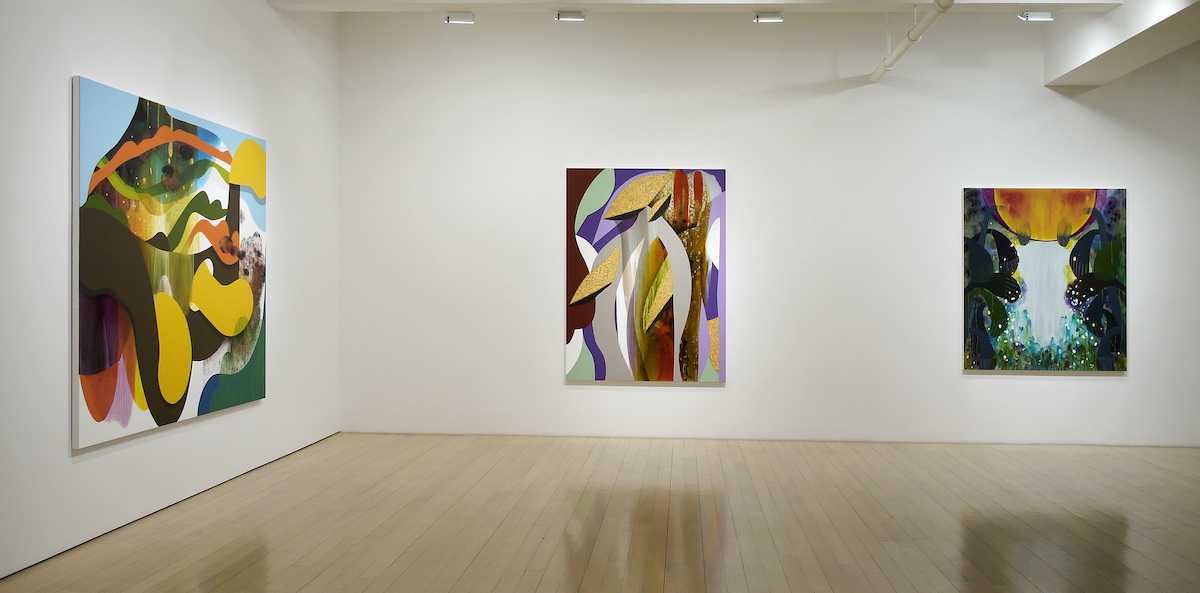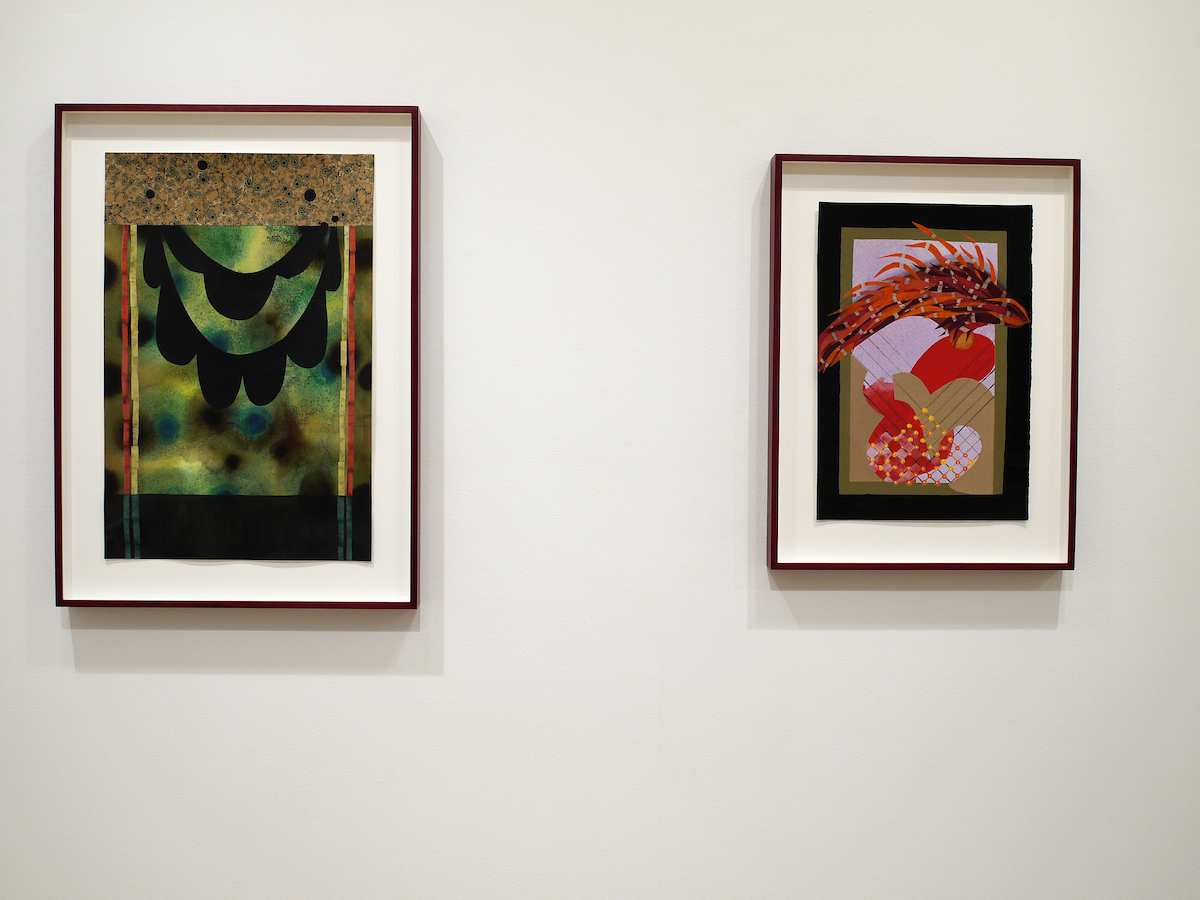More studio time: Something artists crave and structure their lives around, in hopes of getting one more hour or one more day to work. Some of us were granted that wish last year, but of course it’s complicated. Like many artists, the painter Carrie Moyer struggled with what a pandemic world would look like: How will we work, how will we care for ourselves and others?
This year brought a global pandemic, crumbling institutions, and deeper reflections on the fraught culture and history in the United States. During this time, Moyer created much of the work for her exhibition, Analog Time, at DC Moore in Chelsea, on exhibit through May 1, 2021. In a time of extreme uncertainty, she was able to separate her feelings from studio practice and ask, “What does the work need today?”—a simple but difficult mantra to embrace as an artist. Her third solo exhibition with DC Moore, Analog Time presents more than a dozen new works on canvas and paper created between 2019 and 2021.
The gooey, seductive, yet formal paintings appear deep and spatial with patterns and smaller mark making. With faux shadows and layered planes, Moyer smartly handles the illusionary space of abstraction that many painters attempt to wrangle. Her past career in graphic design along with our pervasive relationship to screens today often informs the nuanced shapes, color, and space in her compositions.
Moyer is a staple in American contemporary abstraction, fusing feminist painters of the past with her own visual vocabulary to create a subtly pointed take on the often male-drenched genre of painting. Moyer has exhibited widely across the United States and Europe since the early 2000s. Her work was included in the 2017 Whitney Biennial, and since then she has had exhibitions at the MCA in Denver and the Portland Museum of Art. Examining her career and catalogue confirms a breakneck pace of work and solidifies her as the powerhouse and icon she has become. On top of the rigorous exhibition schedule, Moyer runs the MFA graduate department at Hunter College.
Moyer will open a collaboration with her partner, Sheila Pepe, at the Museum of Art and Design in New York this May in Tabernacle for Trying Times, an extension of a project they started for the Portland Museum of Art last summer. Her images will also soon have the opportunity to grace your bookshelf this fall, with a monograph published by Rizzoli.
In mid-April, I spoke with Moyer via Zoom, both of us in our studios. Interviewing Moyer during the ongoing pandemic made me think about the expectations we put on ourselves and others and the unseen burdens that many of us carry while creating art. Moyer’s calm demeanor that has weathered the art world and beyond gave me solace during a time when having a studio practice can feel monumental and frivolous all at once. We talked about the reduced visual stimulation for artists during the pandemic, the perils of online teaching, and the act of painting when times get tough.
